Erik in NJ
Silver Member
- Oct 4, 2010
- 4,037
- 3,043
- 🥇 Banner finds
- 1
- Detector(s) used
- Minelab Explorer SE Pro & CTX-3030
- Primary Interest:
- Metal Detecting
Had a great weekend in South Jersey getting together with NJLargeCent and GrantHansen (both of TNet)...we hunted some interesting properties and made a varied array of finds including coins, some great buttons, and interesting relics.
I found this enigmatic relic in a large field across from a church that we gained permission to. The finds in this field were sparse other than the plethora of Coke and Pepsi screw on caps and then I got a deep signal on my SE Pro. It read at 8" inches but I had to dig at least 12" to recover it. It's dimesions are approximately 3.5" long (including hinge), 1.5" tall, and 3" wide.
It appears to be a VERY (1.5 to 2 lb.) heavy hinged lid made of pewter with a beautiful floral motif on top. The first thing that came to mind was that it may have been the cover for a beer stein or a sugar dish, but the weight would seem to be quite oppressive for this application. It has some beautiful detail on it and I am posting it here first to try and get some opinions as to what it may have been part of.
I'll post a group post of my finds from the weekend and perhaps Grant will make a post of all the items we unearthed as a team. Regardless of the finds the company was great and we had a blast. One of the high points of the weekend for me was dining with the guys at an authentic English Fish & Chips House in the area that was fantastic.
Thanks for viewing.
I found this enigmatic relic in a large field across from a church that we gained permission to. The finds in this field were sparse other than the plethora of Coke and Pepsi screw on caps and then I got a deep signal on my SE Pro. It read at 8" inches but I had to dig at least 12" to recover it. It's dimesions are approximately 3.5" long (including hinge), 1.5" tall, and 3" wide.
It appears to be a VERY (1.5 to 2 lb.) heavy hinged lid made of pewter with a beautiful floral motif on top. The first thing that came to mind was that it may have been the cover for a beer stein or a sugar dish, but the weight would seem to be quite oppressive for this application. It has some beautiful detail on it and I am posting it here first to try and get some opinions as to what it may have been part of.
I'll post a group post of my finds from the weekend and perhaps Grant will make a post of all the items we unearthed as a team. Regardless of the finds the company was great and we had a blast. One of the high points of the weekend for me was dining with the guys at an authentic English Fish & Chips House in the area that was fantastic.
Thanks for viewing.
Attachments
Upvote
3


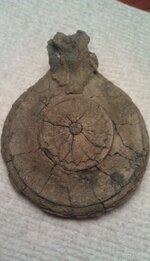
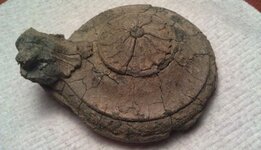
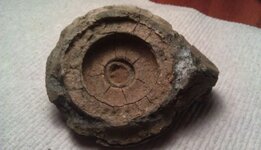
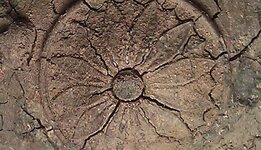
 The area in which we were hunting is rich with Colonial artifacts that date back to the Rev War and this one was quite deep at 12" - 14" in the ground, in addition there were significant British/enemy troop movements in the area and that is verified. Please let me know if you are able to find any similar examples of such a muzzle cover made of pewter.
The area in which we were hunting is rich with Colonial artifacts that date back to the Rev War and this one was quite deep at 12" - 14" in the ground, in addition there were significant British/enemy troop movements in the area and that is verified. Please let me know if you are able to find any similar examples of such a muzzle cover made of pewter.
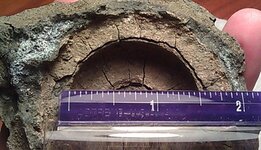

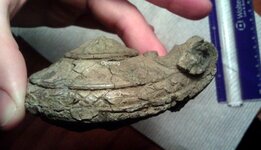
 Just Kidding!!!
Just Kidding!!!
